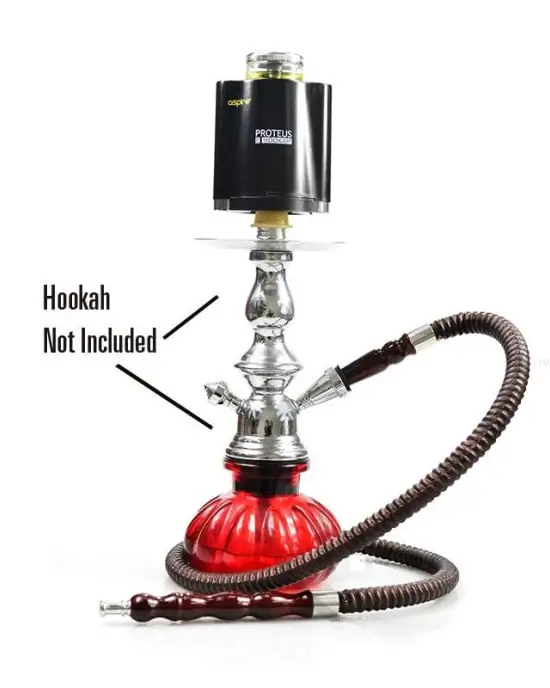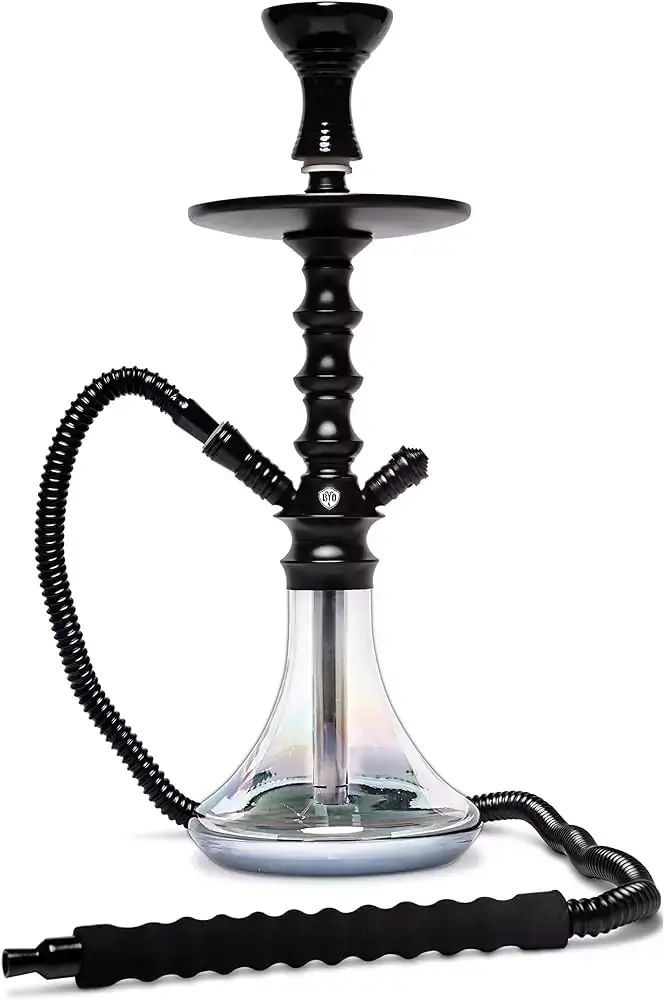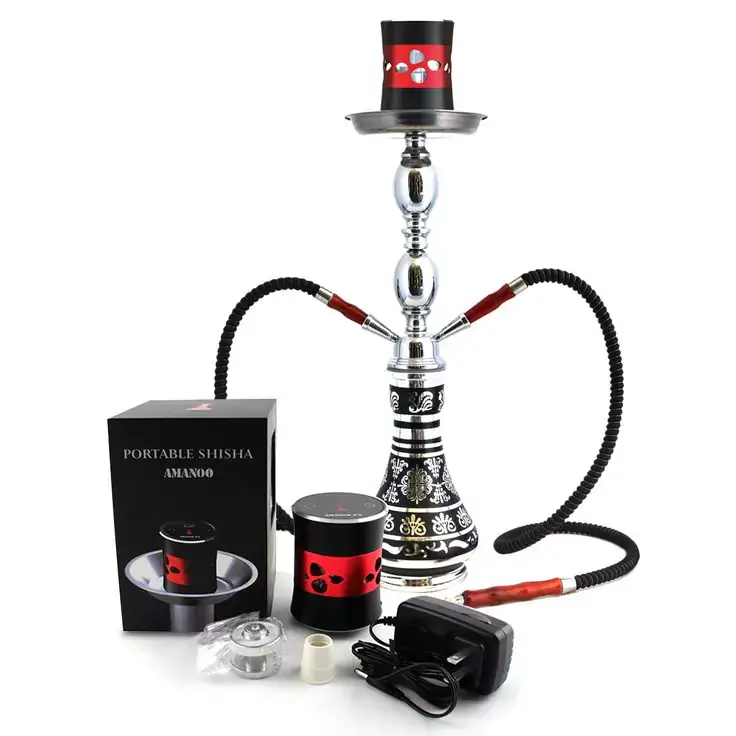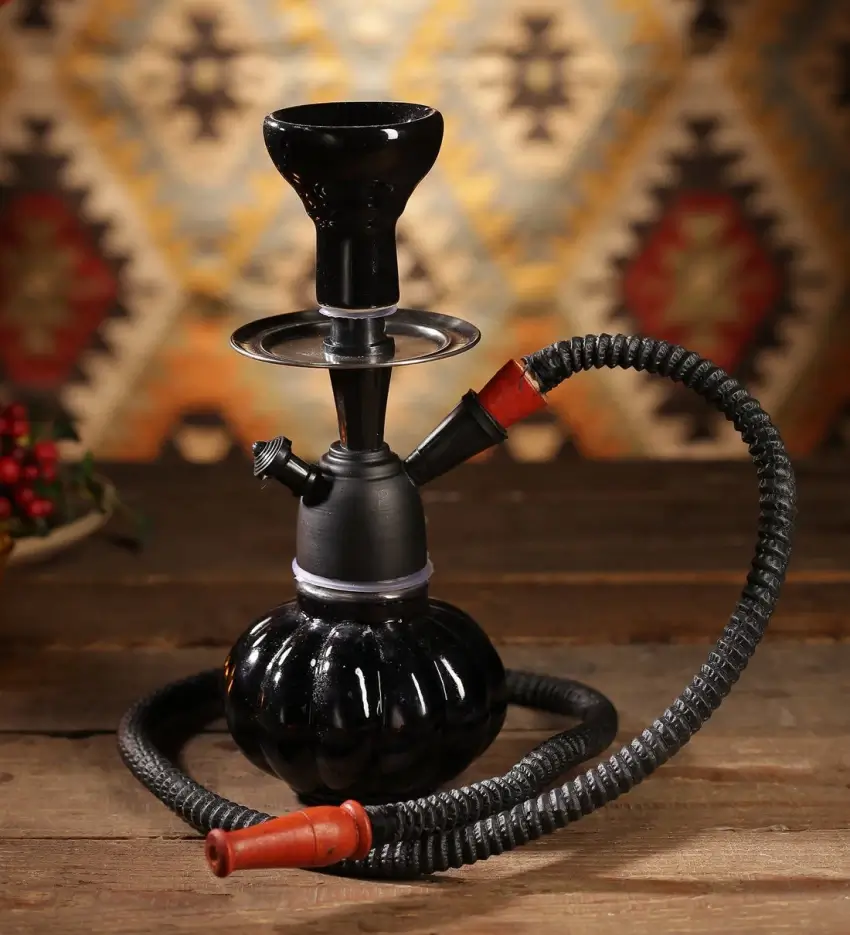WARNING: This product contains nicotine. Nicotine is an addictive chemical.

In the realm of alternative smoking experiences, Hookah vaping and vaping have gained popularity as substitutes for traditional cigarettes. These two methods offer unique sensations and flavors, attracting a diverse range of enthusiasts. However, it’s essential to understand the distinctions between Hookah vaping and vaping, their respective health risks, and the commonalities they share. In this article, we will delve into the world of Hookah vaping and vaping, exploring their mechanisms, flavors, legal status, nicotine delivery, and social aspects.

Hookah Vape, often referred to as hookah, and vaping employ distinct mechanisms to provide users with their preferred smoking experiences. These mechanisms play a pivotal role in shaping the unique characteristics of Hookah vaping and vaping and contribute to the distinct health effects associated with each.
Hookah Vape Mechanism
Hookah Vape, also known as hookah or water pipe, has a centuries-old history rooted in the Middle East and Asia. The mechanism behind Hookah Vape involves a combination of traditional and elemental elements:
Charcoal Heating: Hookah Vape tobacco, typically flavored, is placed in a small bowl at the top of the hookah. Charcoal, traditionally used, is ignited and placed on top of the tobacco. The burning charcoal generates heat, which is essential for vaporizing the tobacco.
Smoke Filtration: The smoke produced from the burning tobacco is drawn through a water chamber located at the base of the hookah. This water filtration process is believed to cool and purify the smoke before it reaches the user.
Inhalation: Users inhale the smoke through a rubber hose or pipe attached to the hookah. This inhalation delivers the flavored smoke to the user’s mouth and lungs.
The combination of these elements creates a specific smoking experience characterized by the smooth, aromatic nature of Hookah Vape smoke.
Vaping Mechanism
In contrast to the centuries-old tradition of Hookah vaping, vaping is a modern invention introduced in the early 2000s. The vaping mechanism is markedly different:
E-liquid Vaporization: Vaping devices, known as e-cigarettes, vape pens, or mods, are equipped with a heating coil or atomizer. Users fill a tank or cartridge with e-liquid, which typically contains nicotine, propylene glycol (PG), vegetable glycerin (VG), and flavorings.
Electric Heating: When a user activates the vaping device, the heating coil is powered by electricity. This coil rapidly heats the e-liquid, causing it to vaporize and turn into a fine aerosol.
Direct Inhalation: The resulting vapor is inhaled directly by the user. Unlike Hookah vaping, there is no water filtration involved in vaping, and the vapor is delivered without the need for burning tobacco.
The key distinction in vaping lies in the absence of combustion, which results in lower levels of toxic substances compared to traditional smoking methods.

These differences in mechanisms lead to varying smoking experiences and health effects.
Hookah Vape: Hookah Vape provides thicker, more aromatic smoke due to the use of burning tobacco and water filtration. The traditional process lends itself to a more relaxed and social atmosphere. However, the combustion of tobacco and charcoal exposes users to potential health risks, including respiratory issues and exposure to harmful chemicals.
Vaping: Vaping produces a thinner vapor with a more pronounced flavor, making it appealing to users who prefer a cleaner taste. The absence of combustion reduces the levels of harmful substances, but long-term health effects are still under investigation, and concerns about addiction, particularly among young people, have emerged.
Flavors and Experiences
Both Hookah Vape and vaping offer an array of flavors to cater to diverse tastes. From fruity and sweet to minty and savory, users can find a wide range of choices. However, the flavors and overall experiences provided by these two methods differ significantly. Hookah Vape delivers a thicker, more aromatic smoke, often described as smooth and relaxing. In contrast, vaping produces a thinner vapor with more pronounced flavors, which some users find more satisfying.
Legal Status
The legal status of Hookah Vape and vaping varies from one location to another. Some places have restrictions or bans on Hookah Vape smoking in public spaces, while others have no specific regulations. Vaping, on the other hand, is subject to broader regulations, including age restrictions, limitations on advertising, and bans on certain e-liquids or devices. It is crucial for users to familiarize themselves with local laws and regulations governing these practices before partaking.
Nicotine Delivery and Social Aspects
Both Hookah Vape and vaping can deliver nicotine to users, depending on the type of Hookah Vape or e-liquid used. Traditional shisha tobacco contains nicotine, and many e-liquids are available with varying nicotine concentrations. However, nicotine-free options exist for both Hookah vaping and vaping, such as herbal Hookah vaping and nicotine-free e-liquids.
Additionally, Hookah vaping and vaping share a common social aspect, with users often gathering in groups to enjoy the experience. Hookah Vape lounges and hookah bars provide a social setting for Hookah Vape enthusiasts, while vape shops and cafes cater to the vaping community. Both activities foster a sense of camaraderie and shared interest among enthusiasts.

Health Concerns Related to Hookah Vape
Exposure to Tobacco Smoke: Hookah vaping involves the burning of flavored tobacco, which produces smoke containing harmful substances. Users are exposed to tobacco smoke, which can contain nicotine, carbon monoxide, and various chemicals. Prolonged exposure to tobacco smoke can increase the risk of respiratory illnesses, including bronchitis and lung infections.
Carbon Monoxide: The burning charcoal used in Hookah Vape generates carbon monoxide, a colorless and odorless gas that can be harmful when inhaled. Chronic exposure to carbon monoxide can lead to cardiovascular problems and reduce the oxygen-carrying capacity of the blood.
Periodontal Disease: Hookah Vape smoking has been linked to an increased risk of periodontal (gum) disease. The chemicals in Hookah Vape smoke can damage gum tissues and lead to inflammation, potentially causing gum disease and tooth loss.
Pregnancy Risks: Pregnant women who smoke Hookah Vape expose themselves and their unborn children to the harmful effects of tobacco smoke. This can result in low birth weight and other adverse outcomes for the baby.
Health Concerns Related to Vaping
Lung Health: Vaping is often marketed as a safer alternative to smoking due to the absence of combustion. However, concerns have arisen regarding the impact of vaping on lung health. Some studies have linked e-cigarette use to lung injuries, particularly among those using illicit or black-market vaping products. These cases have raised questions about the long-term effects of vaping on the respiratory system.
Cardiovascular Effects: Vaping may have potential cardiovascular risks. While it is generally believed to be less harmful than smoking, the inhalation of certain e-liquid ingredients can lead to heart-related issues, especially in individuals with pre-existing conditions.
Addiction, Particularly Among Youth: The appealing flavors and marketing tactics associated with vaping have raised concerns about addiction, particularly among young people. The nicotine content in many e-liquids can lead to nicotine addiction, with adverse effects on cognitive development and behavior in adolescents.
In the debate between Hookah vaping and vaping, it’s essential to understand the differences in their mechanisms, flavors, legal status, nicotine delivery, and health risks. Both offer unique experiences and have their share of enthusiasts, but users should be aware of the potential health concerns associated with each method. Ultimately, the choice between Hookah vaping and vaping should be made with a clear understanding of the risks and benefits involved.
If you want to know more, please refer to this article:
https://keystonevape.com/best-vape/top-10-disposable-vape-manufacturers-in-2023/
